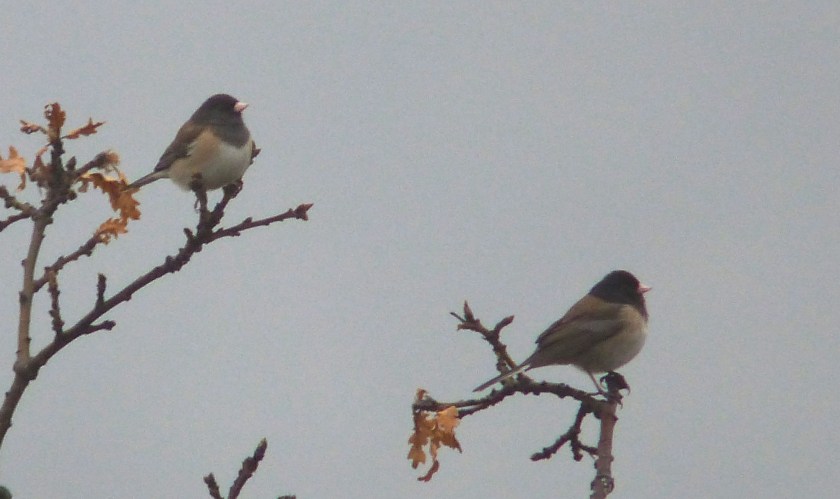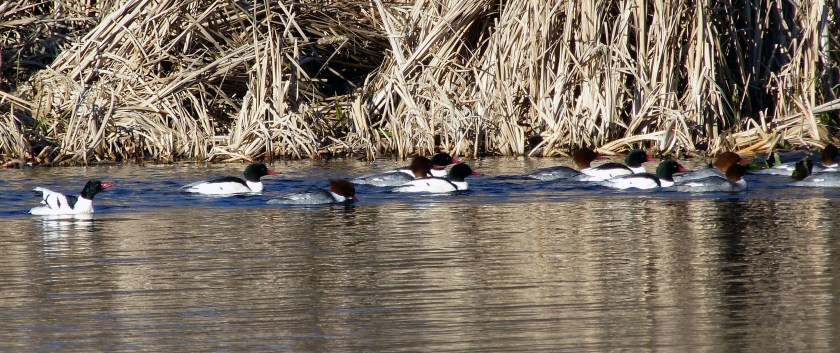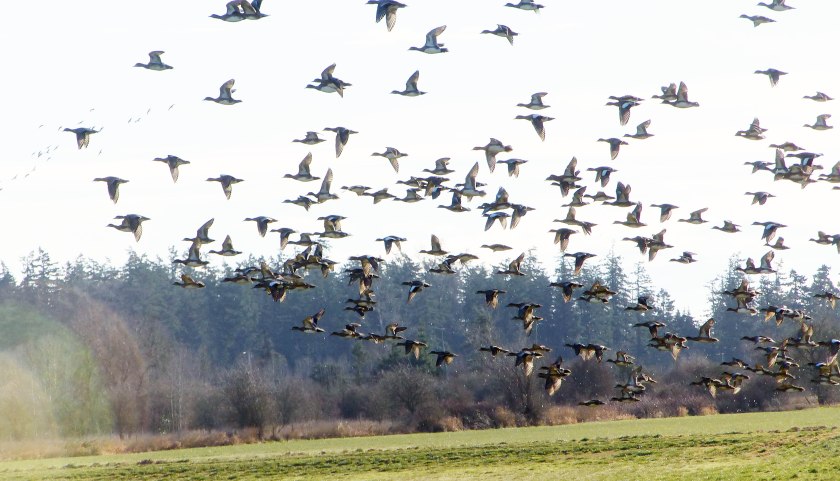
The Fog Clears
It was bright and clear at sea level when I left home this morning but by the time I get to the top of Observatory Hill heavy cloud is moving in and drifting down into the trees. Red-barked Arbutus, pale maples and the rocky bones of the mountain become ghostly, moss-draped forms; the boles of giant firs, alleys of indistinct columns. I take the trail past one of the smaller telescope-covering domes (the reason it’s called Observatory Hill) and go down into the mist. I can hear birds – nuthatches, drumming woodpeckers, kinglets, a Varied Thrush – but aside from a half dozen Ravens, an Anna’s Hummingbird and a few Dark-eyed Juncos, I see nada. I had hoped to luck into a Northern Pygmy Owl, my real goal this morning. They live up here reportedly and hunt in the daytime, and I have yet to get a picture of one of these fierce little hunters. Now, with the fog, I’m expecting I’ll be plumb out of luck today.

Dark-eyed Juncos
I hike through the gloomy forest, being careful to stay on trails I know. I’ve been lost in forests before and I do not like the feeling. After an hour or so, a light breeze arrives, quickens, changes direction and begins to scour the cloud from my side of the ‘mountain’. I pause on a rock outcrop for a view of Prospect Lake. It’s so quiet, so peaceful. A young Bald Eagle cruises past, gives me the ‘hairy eyeball’ and carries on. Fine. I’m leaving anyway. After a couple of hours on a cold, foggy mountaintop, I’m ready for a cup of hot coffee and, just maybe, a donut.

Bald Eagle
On my way back up through the firs, I hear something – the clear, repeated ‘toots’ of a Pygmy Owl calling. And from the other side of the trail, a hundred meters or so away, another bird, ‘tooting’ back. I think they do this, male and female counter-calling. They might stand still for a photo if I could just find them. The mist lingers here and there and the sound seems to move around, making it hard to locate the Pygmy. I never do get a picture. My reward for stalking the birds is a brief flash of underwing, and those sounds. Still, the owls are here, on Observatory Hill. Next chance I get, next clear early morning, I’ll be up here searching.
















